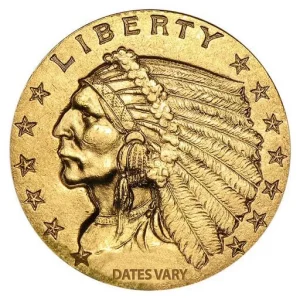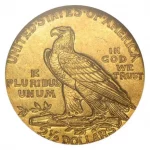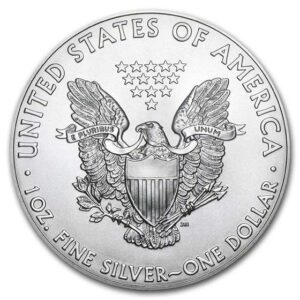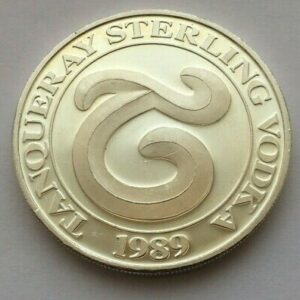Description
$2.50 INDIAN HEAD GOLD COIN (XF)
Theodore Roosevelt has been credited with clocking up many achievements during his U.S. presidency, which lasted from 1901 until 1909. However, a key part he played as the country moved towards beautifying its coins could be too easily overlooked. Starting in 1904, Roosevelt campaigned vigorously for new coin designs. After expressing his dim view of how the country’s coinage looked, he suggested that Augustus Saint-Gaudens, a highly-esteemed sculptor and a friend of the President, could redesign it to more pleasing effect.
There were five coins which could be visually revamped without Congress’s approval: the cent and the four gold pieces comprising the eagle, the double eagle, the half eagle, and the quarter eagle. Saint-Gaudens finished designs for the first two before his August 1907 death. Due to difficulties with bringing the new eagle and double eagle into production, attention to producing fresh designs for the remaining two eagles was not strong before late 1907. In November that year, George B. Cortelyou, the Secretary of the Treasury, said that those two smaller pieces would take the double eagle’s design. However, obstacles to this strategy soon became clear.
At the time, the law required particular legends to be put on the quarter eagle and the half eagle. Charles E. Barber, who had served as the U.S. Mint’s Chief Engraver since 1879, pointed out that including all of these legends on those small pieces would not be easy. This did not deter the Mint from attempting to do so anyway. However, a remarkable series of events led to the Mint ultimately deciding to adopt a markedly different design instead. In January 1808, one of Roosevelt’s friends, Dr. William Sturgis Bigelow, told the President that, alongside sculptor Bela Pratt, he was developing an exciting idea for high relief coins. While such coins tended to wear easily and be difficult to stack, this new idea would allow high relief coins to be minted but avert the above problems. Roosevelt said that he was interested in the idea, and Pratt responded by making plaster models for a proposed new coin design.
This design omitted the female Liberty of Saint-Gaudens’ design in favor of a Native American man’s head. This head was in profile, facing left, and decorated with large feathers of a detailed headdress. The piece’s flipside would have a more conventional, eagle-depicting design. Especially interesting, the letters and other visual features of the design would be sunk into the coin’s .900 gold body. There was a belief that the resulting coin’s greater ability to be stacked and better protection against erosion of the flat plane would assist in meeting the country’s commercial needs. Wishes of businesspeople and bankers would be met.
This peculiar approach to design was also deemed novel in an artistic sense. This coin’s features could still wear away with the passage of time; however, when looking at an XF-rated Indian quarter eagle, you would see that only the coin’s flat plane has any wear, which would be light. The reference XF is used to indicate the Sheldon Coin Grading Scale grade of Extremely Fine.
Features of the Common Date $2.50 Indian Gold Quarter Eagle XF:
XF, meaning Extremely Fine, condition
Face value matching 250 cents
One of the more common dates from either production run
















There are no reviews yet.